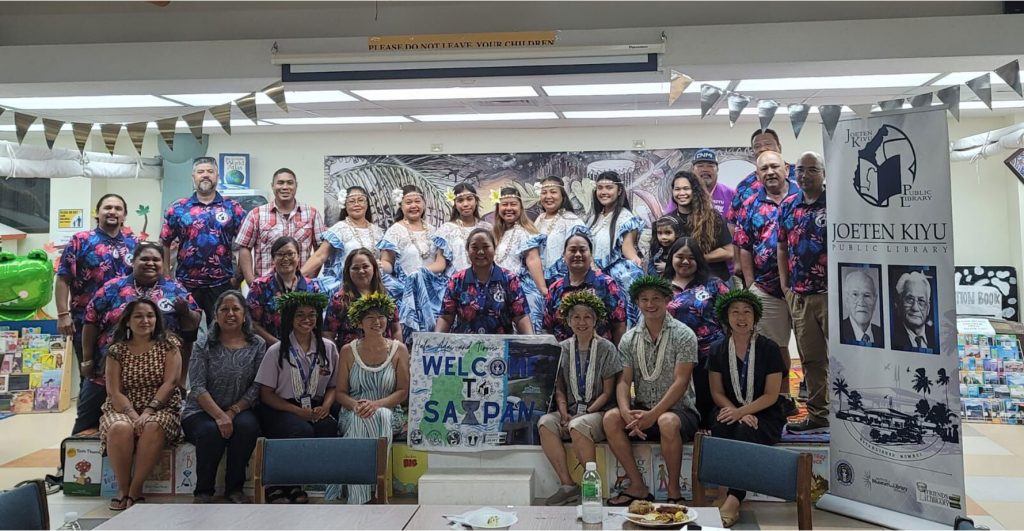Learning how to preserve, save resources during disasters
To better protect museums, libraries, and community spaces from the damaging effects of disasters and other emergencies, the Joeten-Kiyu Public Library recently partnered with the University of Hawai’i in a two-day free hands-on workshop on “Assisting Museums, Libraries, and Community Spaces in Disaster Preparedness and Response.”
JKPL hosted the workshop at the main library from June 21 to June 22, 2023. It was facilitated by paper conservator Liane Naauao, who introduced disaster management strategies and activities such as risk management, emergency planning, and response.
About 20 participants attended the workshop on disaster preparedness. Many shared their background, experience with disasters and growing up with climate change, typhoons, flooding, and fire.
“…Si yu’us and mahalo to Noelle Kahanu, Eric Chang, Karen Kosasa, and paper conservator Liane Naauao for sponsoring this valuable training opportunity for our island community. Thank you to my amazing team at Joeten-Kiyu Public Library for preparing, planning, and coordinating these efforts together. You can never be too ready for a disaster,” said JKPL director Erlinda Naputi
The workshop was held in the JKPL McRel Room.
Aside from sharing an “Introduction to Emergency Preparedness,” Naauao also shared a Pocket Response Plan prepared by the Council of State Archivists. The Pocket Response Plan is a paper-based document that contains a response checklist for emergency in an archives or records facility and would contain all emergency contact information should the need arise.
That day the team conducted an on-site risk assessment activity inside/outside the public library and completed a risk assessment worksheet adapted from the National Park Service Museum Handbook, Risk Assessment Worksheet 10.2 (2000).
On Day 2, participants learned the following: emergency planning; disaster supplies and safety measures with an on-site walk-through of the disaster kit; hands-on salvage activity; and shared best practices and lessons learned.
Naauao shared her personal salvaging experience from a devastating flash flood, which overflowed the banks of Mānoa Stream on Oct. 30, 2004. Flooding caused an estimated $80-million damage to 32 buildings on University of Hawaiʻi at Mānoa campus. The flood rushed through the UH Manoa campus, directly hitting the Hamilton Library. According to University of Hawai’i News, “Hundreds of thousands of historical maps, aerial photographs and government documents along with numerous computers and servers were damaged or destroyed after water, up to eight feet deep, flooded the library’s ground floor. The floodwaters broke through walls, toppled bookshelves and overturned furniture.”
Workshop participants learned valuable salvaging techniques to preserve and protect precious historical and cultural information from being destroyed, including how to salvage maps, video cassette tapes, compact disks, floppy disks, magazines, photographs, paperback books, hardcover books, casings, and film.
The team learned how to salvage water-damaged family valuables and heirlooms from FEMA fact sheet. They accessed an ideal “Disaster Preparedness Kit,” which contained emergency supplies dedicated to responding to an emergency or disaster that affects collections. The portable kit could be stored in a mobile container for easier transport to a disaster site.
Another group exercise included Canopy Making 101. Participants worked together in groups of four to build canopies to respond to roof leakage. They learned how to make clove hitch knots and tautline hitch knots. Then hoisted up plastic sheeting supported by cotton strings secured to coins and tied onto the McRel Room ceiling. (PR)
























